Constantine I
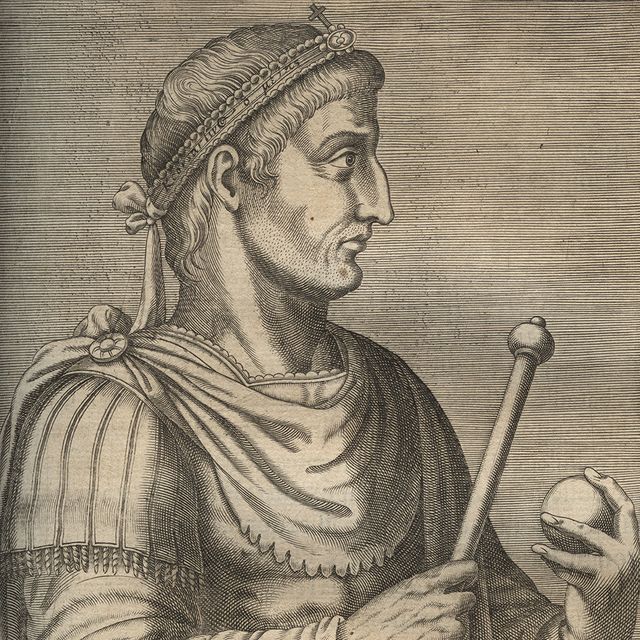

Who Was Constantine I?
Constantine I's father became the Western Roman emperor in 305. After his father's death, Constantine fought to take power. He became the Western emperor in 312 and the sole Roman emperor in 324. Constantine was also the first emperor to adhere to Christianity. He issued an edict that protected Christians in the empire and converted to Christianity on his deathbed in 337.
Flavius Valerius Constantinus, who would become Roman emperor Constantine I, was born on February 27, circa 280 (sources range from 272 to 284), in Naissus, Moesia (now Niš, Serbia). His father, Flavius Valerius Constantius, was an officer in the Roman army. Constantine's mother, Helena, was from humble beginnings; it is unknown whether she was the wife or concubine of Constantius.
In 289, Constantine's father left Helena to marry the stepdaughter of Maximian, the Western Roman emperor. Constantine's father was elevated to deputy emperor under Maximian in 293. Constantine himself was sent to the court of Diocletian, the Eastern Roman emperor. There, Constantine was educated in Latin and Greek. He likely also witnessed the persecution of Christians.
In 305, following Maximian's abdication, Constantine's father became Emperor Constantius I. Constantine then joined his father on a military campaign and fought alongside him in Britain. The next year, Constantius died at Eboracum (now York). Constantine was declared emperor by his troops. To make the designation official, he began to fight for power.
Rise to Power
During a period of civil war, Constantine defended his position against different Roman factions, including Maxentius, Maximian's son. In 312, Constantine fought in Italy, meeting Maxentius and his forces at the Milvian Bridge on the Tiber River. Accounts of Constantine's life state that, following a vision, he had ordered a Christian symbol to be painted on his soldiers' shields. Under this emblem, Constantine was successful in battle and entered Rome.
Constantine now became the Western Roman emperor. He soon used his power to address the status of Christians, issuing the Edict of Milan in 313. This proclamation legalized Christianity and allowed for freedom of worship throughout the empire.
For a time, Constantine stood by as others ruled the Eastern Roman Empire. In 316, Licinius, who had been sharing power with Maximinus, became the only Eastern emperor. In 324, Constantine defeated Licinius and took control of a reunited empire. After this triumph, Constantine founded the city of Constantinople on the site of Byzantium.
Sole Roman Emperor
Constantine continued to proclaim his adherence to Christianity, and his reign established influence over religious conflicts within the church. Not wanting questions about the divine nature of Christ to sow discord, Constantine summoned church officials to the Council of Nicaea in 325. Out of this came the Nicene Creed, which affirmed that Jesus was a divine being.
While in power, Constantine issued reforms intended to strengthen his regime. One such reform was a reorganization of the army, which helped Constantine when he faced tribes such as the Visigoths and the Sarmatians.
Constantine was in Helenopolis, planning a campaign against Persia when he fell ill. He set out to return to Constantinople, but grew worse and was forced to halt his journey. He had delayed his baptism — a common practice at the time — but now underwent the rite. Constantine died on May 22, 337, in Ancyrona, near Nicomedia, Bithynia (modern-day Izmit, Turkey), at the approximate age of 57. He was buried in Constantinople at the church of the Apostles.
QUICK FACTS
- Name: Constantine
- Birth Year: 280
- Birth date: February 27, 280
- Birth City: Naissus, Moesia (now Niš, Serbia)
- Birth Country: Serbia
- Gender: Male
- Best Known For: Constantine I was a Roman emperor who ruled early in the 4th century. He was the first Christian emperor and saw the empire begin to become a Christian state.
- Christianity
- World Politics
- War and Militaries
- Astrological Sign: Pisces
- Nacionalities
- Interesting Facts
- Constantine I had his eldest son, Crispus, and his wife, Fausta, put to death in 326.
- Death Year: 337
- Death date: May 22, 337
- Death City: Ancyrona, Bithynia (now ?zmit, Turkey)
- Death Country: Turkey
CITATION INFORMATION
- Article Title: Constantine I Biography
- Author: Biography.com Editors
- Website Name: The Biography.com website
- Url: https://www.biography.com/political-figures/constantine-i
- Access Date:
- Publisher: A&E; Television Networks
- Last Updated: May 21, 2021
- Original Published Date: April 2, 2014
- How pleasing to the wise and intelligent portion of mankind is the concord which exists among you.

Napoleon Bonaparte

Queen Elizabeth II
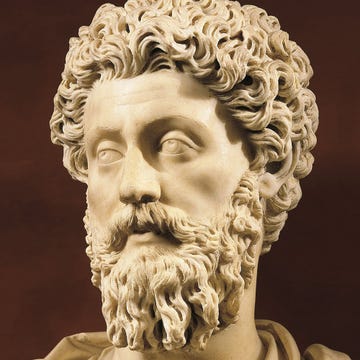
Marcus Aurelius
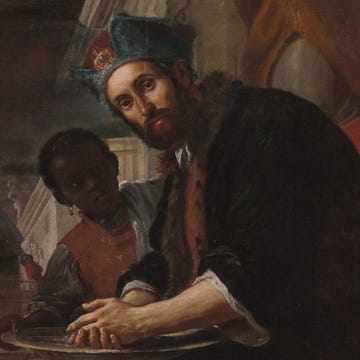
Pontius Pilate

Maria Theresa
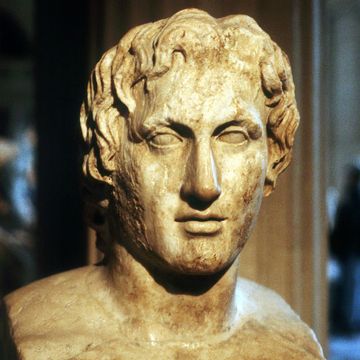
Alexander the Great
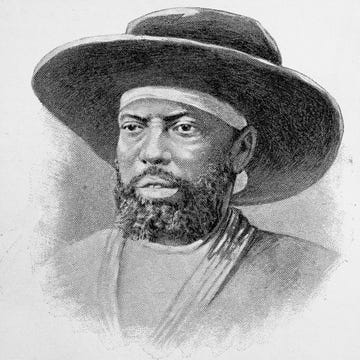
Nicholas II
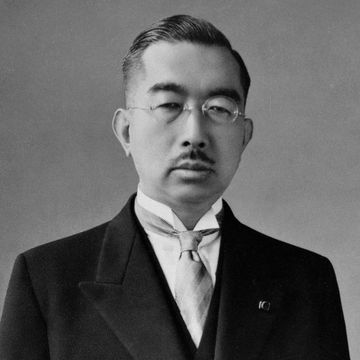
Kaiser Wilhelm
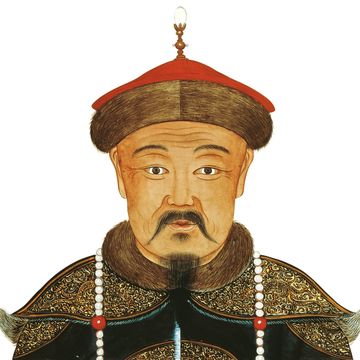
Kublai Khan
Biography Online

Constantine The Great Biography
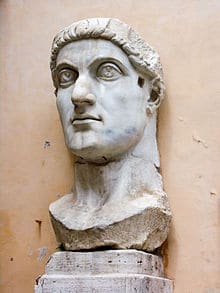
Constantine was Roman Emperor (A.D. 306-337). He was the first Roman Emperor to convert to Christianity and played a crucial role in the spread of the religion. With co-Emperor Licinius, he issued the Edict of Milan in 313, which proclaimed tolerance of all religions throughout the empire.
Constantine was born in Naissus, Moesia Superior (modern-day Serbia). His original name was Flavius Valerius Constantinus and his father was an officer in the Roman army.
Constantine received a formal education at Diocletian’s court where he learnt Latin and Greek and was able to mix with a variety of pagan and Christian scholars. However, the time was also a period of widespread persecution of Christians. In 303, Diocletian began the great persecution of Christians which led to widespread arrests, executions, and destruction of Church property. Constantine would later claim he opposed those measures, though it is more likely that he did nothing.
In 293, the Roman Empire was divided in two by Diocletian, leading to a Western and Eastern Augustus. His father Constantius was promoted to the office of caesar and went to Gaul to campaign against local rebellions. His father’s promotion through the Roman ranks, gave Constantine an excellent chance of succeeding him.
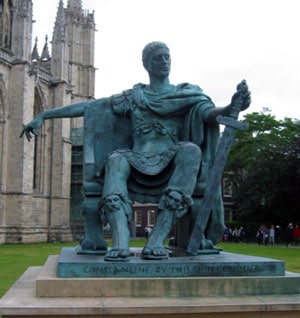
Statue of Constantine at York.
In 305, Constantine left the confines of Galerius court and joined his father in Britain, where he made a base in York. On the death of his father, Constantine was declared Augustus, a decision reluctantly accepted by Galerius.
There then followed years of turmoil and civil war in which Constantine found himself fighting opponents to Roman rule, but also from within different Roman factions.
Constantine was a great military commander winning major victories over the Franks and Alamanni in 306-08, and later against the Visigoths in 332 and the Sarmatians in 334. This strengthened his political strength as he came to be viewed as someone who could unite the fracturing Roman Empire.
The Battle of Milvian Bridge
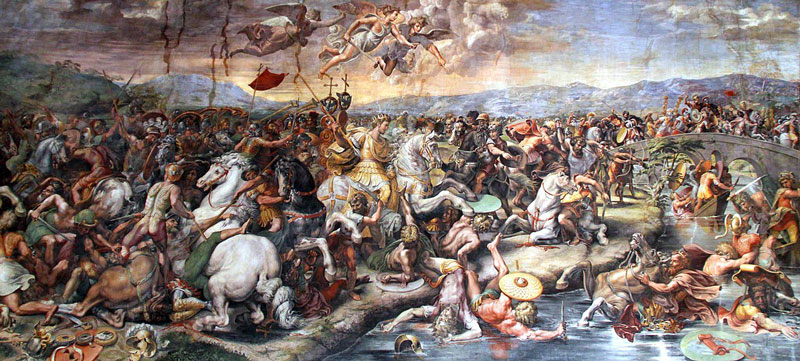
Battle of the Milvian Bridge by Giulio Romano
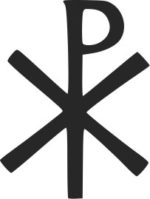
Eusebius, a Christian friend of Constantine describes this moment
“he saw with his own eyes in the heavens a trophy of the cross arising from the light of the sun, carrying the message, In Hoc Signo Vinces or “with this sign, you will conquer”
In the battle the following morning, Constantine was decisively victorious, and he was able to enter Rome on the next day. On entering Rome, Constantine embarked on a lengthy propaganda campaign to legitimise his rule and portray himself as a liberator over the tyrant Maxentius.
Constantine was able to consolidate his role, proving his military superiority over his rivals. In 313, with Licinius, he signed the Edict of Milan. This legalised Christianity and allowed freedom of worship. This edict was often ignored, but it was still an important moment with the principle of tolerating Christianity accepted within the Roman empire. It established Sunday as a day of worship and created provisions for confiscated property to be returned to the church. Whilst the Edict of Milan supported tolerance of Christians, there was no mention of Jews, and as Christianity became the dominant religion in Rome, there was a development of greater persecutions against the old Jewish populations.
Nicene Creed
Another critical moment in the history of early Christianity was in 325 when he summoned the Council of Nicaea. This was to resolve the conflict between two Christian theologians Arius and Athanasius. The motivation of Constantine may have been the desire to create a single unified religion, which was easier to use as a tool for the empire. The Council of Nicaea led to the Nicene Creed , which was the most important tract in formalising what Christianity actually was. The Nicene Creed asserted the view of St Paul that Christ was divine, and made other versions of Christianity, such as Gnosticism and Arianism heretical.
In 326 Constantine has his wife Fausta and son Crispus put to death. Crispus was his eldest son by his wife Minerva. One account says that Fausta was executed by being cast into boiling water. Reasons for Constantine’s order for execution remain unclear. Some suggested a treasonous plot, others suggested sexual impropriety. But, it shows Constantine’s ruthless streak.
Constantine created a new city at Byzantium ‘Constantinople’ (later called Istanbul) this was to be the new Rome of the East. The city was famous for its beautiful adornments, fountains and sports venues.
Another important reform of Constantine was his civil legislation about different professions. Constantine established a structure for the feudal structure of Europe. He passed a law that certain farmers (coloni) were not allowed to leave the farm, but had to stay on the land. This effectively created a class of farmers known as ‘serfs’ who became at the mercy of landlords who could set high rents. Constantine made other professions hereditary.
Religious views of Constantine
Constantine’s Christianity is a matter of conjecture. He didn’t profess Christianity until he was over 40. As well as making a tribute to Christianity; he continued to pay his respect to the old pagan traditions and sacrifices to Apollo and Hercules.
Constantine’s mother St Helena was much stronger in her profession of Christian faith. It is believed she was able to influence her son in promoting and protecting Christianity – even if she couldn’t make him share her faith. Whilst the sincerity of Constantine’s conversion to Christianity, his acceptance of the faith by the Roman Empire marked a turning point for the religion. It became obvious during Constantine’s reign that joining the Christian faith was important for gaining promotion and useful privileges. Under Constantine, Christianity went from being an oppressed religious minority to gaining the influence of the whole Empire. It assured Christianity’s spread, though it may also have led to its dilution as The Nicene Creed was critical in defining what Christianity was and wasn’t.
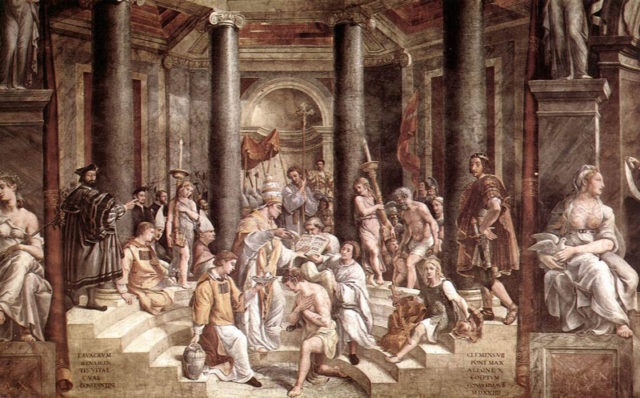
Baptism of Constantine by students of Raphael
In 337, Constantine fell ill and tried to make it back to his capital Constantinople. As he was dying he asked to be baptised by the bishops in the River Jordan.
Conflicting Sources
In medieval times, Constantine was held up as a model ruler by the Catholic church and presented as a paragon of virtue. However, later historians have questioned the sincerity of his Christian faith. They have presented Constantine as a clever scheming politician who saw the political power of a unified religion, such as Christianity.
Influence and achievements of Constantine
Constantine was a very influential figure in world history. Although we may doubt the sincerity of his Christianity, he was the first Roman ruler to openly tolerate and allow the religion to flourish. On his deathbed he made a formal conversion, overturning centuries of persecution and the effective end of the old Roman pagan religions. Constantine not only secured the success of Christianity but he also determined its direction. The Council of Nicene was crucial for formalising the nature of Christianity with Constantine mostly concerned about creating a strong unified church rather than allowing gnostic traditions. Lost beneath the groundbreaking acceptance of Christianity, Constantine also introduced important social laws such as the implementation of serfdom.
Citation: Pettinger, Tejvan . “Biography of Constantine”, Oxford, UK – www.biographyonline.net . Published 17 March 2010. Last updated 15 March 2020.
Constantine: Roman Emperor, Christian Victor

Constantine: Roman Emperor, Christian Victor at Amazon.com
Related pages
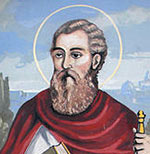

Who was Constantine?
Constantine made Christianity the main religion of Rome, and created Constantinople, which became the most powerful city in the world.
Emperor Constantine (ca A.D. 280– 337) reigned over a major transition in the Roman Empire—and much more. His acceptance of Christianity and his establishment of an eastern capital city, which would later bear his name, mark his rule as a significant pivot point between ancient history and the Middle Ages.
The Roman Empire that Constantine was born into was one of chaos and anarchy . Civil wars, invasions, and disease were rending the empire so badly that the era is regarded as the Crisis of the Third Century. Emperor Diocletian tried to bring order by distributing power to a four-ruler tetrarchy that would govern the four quarters of the empire. Constantine’s father, Constantius I, was one of the rulers.
Diocletian’s plan fell apart. After the death of his father in A.D. 306, Constantine was declared emperor by his father’s soldiers. He spent the next 18 years battling the three other Roman rulers—his rivals—to become the sole emperor.
The Battle of Milvian Bridge outside Rome in A.D. 312 was a watershed moment for Constantine. He defeated one rival, his brother-in-law Maxentius , and gained the mantle of western Roman emperor. But of far greater import was a revelation he experienced before the battle.
According to Constantine’s biographer Eusebius, Constantine and his forces saw a cross of light in the sky, along with the Greek words for “In this sign conquer.” That night, Constantine had a dream in which Christ reinforced the message. The emperor marked the Christian symbol of the cross on his soldiers’ shields. When he triumphed at Milvian Bridge, he attributed the victory to the god of the Christians. Modern scholars still debate the tale and whether Constantine’s conversion was sincere or a political maneuver. Regardless, in A.D. 313 Constantine met with Licinius, the eastern emperor, and together they issued the Edict of Milan. The edict granted “to the Christians and others full authority to observe that religion which each preferred .”
Birth of Christianity

Christianity emerged in the far reaches of the Roman Empire sometime around A.D. 26 or 27, when Jesus of Nazareth began his public ministry. Attracting large crowds throughout his native Galilee (in modern-day Israel), he preached a message of forgiveness, love, and renewal. He talked about fulfilling the Scriptures but stopped short of openly declaring himself the “Messiah,” the savior of the Jewish nation prophesied in the Hebrew Bible. Jesus was arrested on charges of blasphemy and crucified around A.D. 30. The Bible tells that Jesus rose from the dead three days after his Crucifixion. His followers called him “the Christ,” or the “anointed one,” and referred to themselves as Christians. They began to spread the Gospel, the “good tale,” of his life and ministry.
A change of scene
Constantine assumed sole control over the empire in A.D. 324. Rome, however, was losing its luster for him. Tensions remained high between the city’s pagans and the Christian emperor. Moreover, from a military standpoint, Constantine realized it would be easier to fend off threats from the east and to protect valuable territory—and granaries—in Egypt if he moved his capital to a more defensible eastern location. He left Rome for good to build an imperial city that would glorify both his power and his faith.
Constantinople (modern-day Istanbul), his capital , was dedicated in A.D. 330. Previously known as Byzantium, it had been under Roman control for well over a century, but Constantine rebuilt and expanded it on a monumental scale. He tripled the size of the existing city and offered full citizenship and free bread to encourage men of rank to move there with their families. A large palace and imposing legislative halls established the city’s gravitas as the new capital. Churches began to punctuate the skyline; Christians were welcomed, and other faiths were generally tolerated.
The ascendant Constantinople soon eclipsed Rome. The western empire gradually crumbled until Rome’s fall in A.D. 476. Yet Constantine’s capital—and the Christian foundation he laid there for the empire—continued to thrive for nearly a thousand years.
Constantinople, the new Rome
By the time Constantine established his new capital in A.D. 330, the city that would be called Constantinople had changed hands multiple times among regional superpowers. Darius I of Persia, the Delian League, the Spartans, and Alexander the Great all had ruled the strategic port known as Byzantium on the Bosporus, a strait between the Black Sea and Sea of Marmara. Roman emperor Septimius Severus destroyed the city in A.D. 196 and rebuilt a grander version, which Constantine expanded upon for his New Rome. The city became a prosperous and important center of faith, power, trade, and architecture. The landmark Hagia Sophia (above) was built by Emperor Justinian during the sixth century, the peak of Constantinople’s glory.
FREE BONUS ISSUE
Related topics.
- ANCIENT ROME
- ANCIENT CIVILIZATIONS
- CHRISTIANITY
- ANCIENT HISTORY
- PEOPLE AND CULTURE
You May Also Like

How was Rome founded? Not in a day, and not by twins.

While Rome was falling, these powers were on the rise

These mosaics survived a millennia. Here's what they revealed about ancient Rome.

The first sack of Rome wasn't when you think it was

7 of the most exciting archaeological discoveries in 2023
- Environment
- Perpetual Planet
- History & Culture
History & Culture
- History Magazine
- Mind, Body, Wonder
- Terms of Use
- Privacy Policy
- Your US State Privacy Rights
- Children's Online Privacy Policy
- Interest-Based Ads
- About Nielsen Measurement
- Do Not Sell or Share My Personal Information
- Nat Geo Home
- Attend a Live Event
- Book a Trip
- Inspire Your Kids
- Shop Nat Geo
- Visit the D.C. Museum
- Learn About Our Impact
- Support Our Mission
- Advertise With Us
- Customer Service
- Renew Subscription
- Manage Your Subscription
- Work at Nat Geo
- Sign Up for Our Newsletters
- Contribute to Protect the Planet
Copyright © 1996-2015 National Geographic Society Copyright © 2015-2024 National Geographic Partners, LLC. All rights reserved
Who Was Constantine the Great?
His legacy included spreading Christianity throughout the Roman Empire
- Figures & Events
- Ancient Languages
- Mythology & Religion
- American History
- African American History
- African History
- Asian History
- European History
- Latin American History
- Medieval & Renaissance History
- Military History
- The 20th Century
- Women's History
- M.A., Linguistics, University of Minnesota
- B.A., Latin, University of Minnesota
The Roman Emperor Constantine (c 280 - 337 A.D.) was one of the most influential personages in ancient history. By adopting Christianity as the religion of the vast Roman Empire, he elevated a once illegal cult to the law of the land. At the Council of Nicea , Constantine the Great settled Christian doctrine for the ages. And by establishing a capital at Byzantium, which became Constantinople and then Istanbul, he set into motion events that would break the empire, split the Christian church, and influence European history for a millennium.
Flavius Valerius Constantinus was born in Naissus, in the province of Moesia Superior, present-day Serbia. Constantine's mother, Helena, was a barmaid and his father a military officer named Constantius. His father would rise to become the Emperor Constantius I and Constantine's mother would be canonized as St. Helena, who was thought to have found a portion of Jesus' cross.
By the time Constantius became governor of Dalmatia, he required a wife of pedigree and found one in Theodora, a daughter of Emperor Maximian. Constantine and Helena were shuffled off to the eastern emperor, Diocletian, in Nicomedia.
The Fight to Become Emperor
Upon his father's death on July 25, 306 A.D., Constantine's troops proclaimed him Caesar. Constantine wasn't the only claimant. In 285, Emperor Diocletian had established the Tetrarchy , which gave four men rule over a quadrant each of the Roman Empire, with two senior emperors and two non-hereditary juniors. Constantius had been one of the senior emperors. Constantine's most powerful rivals for his father's position were Maximian and his son, Maxentius, who had assumed power in Italy, controlling Africa, Sardinia, and Corsica as well.
Constantine raised an army from Britain that included Germans and Celts, which the Byzantine historian Zosimus said included 90,000 foot soldiers and 8,000 cavalry. Maxentius raised an army of 170,000 foot soldiers and 18,000 horsemen.
On October 28, 312, Constantine marched on Rome and met Maxentius at the Milvian Bridge. The story goes that Constantine had a vision of the words in hoc signo vinces ("in this sign you will conquer") upon a cross, and he swore that, should he triumph against great odds, he would pledge himself to Christianity. (Constantine actually resisted baptism until he was on his deathbed.) Wearing a sign of a cross, Constantine won, and the following year he made Christianity legal throughout the Empire with the Edict of Milan.
After Maxentius' defeat, Constantine and his brother-in-law, Licinius, split the empire between them. Constantine ruled the West, Licinius the East. The two remained rivals over a decade of uneasy truces before their animosity culminated in the Battle of Chrysopolis, in 324. Licinius was routed and Constantine became sole Emperor of Rome.
To celebrate his victory, Constantine created Constantinople on the site of Byzantium, which had been Licinius' stronghold. He enlarged the city, adding fortifications, a vast hippodrome for chariot racing, and a number of temples. He also established a second Senate. When Rome fell, Constantinople became the de facto seat of the empire.
Death of Constantine
By 336, Constantine the Great had reclaimed most of the province of Dacia, lost to Rome in 271. He planned a great campaign against the Sassanid rulers of Persia but fell ill in 337. Unable to complete his dream of being baptized in the Jordan River, as was Jesus, he was baptized by Eusebius of Nicomedia on his deathbed. He had ruled for 31 years, longer than any emperor since Augustus.
Constantine and Christianity
Much controversy exists over the relationship between Constantine and Christianity . Some historians argue that he was never a Christian, but rather an opportunist; others maintain that he was a Christian before the death of his father. But his work for the faith of Jesus was enduring. The Church of the Holy Sepulchre in Jerusalem was built on his orders and became the holiest site in Christendom.
For centuries, Catholic popes traced their power to a decree called the Donation of Constantine (later proved a forgery). Eastern Orthodox Christians, Anglicans, and Byzantine Catholics venerate him as a saint. His convocation of the First Council at Nicea produced the Nicene Creed, an article of faith among Christians worldwide.
- Was Constantine the Great a Christian?
- The Fall of Rome: How, When, and Why Did It Happen?
- The Arian Controversy and the Council of Nicea
- Albania - The Ancient Illyrians
- Periods of History in Ancient Rome
- What Was the Roman Tetrarchy?
- Constantinople: Capital of the Eastern Roman Empire
- Introduction to Byzantine Architecture
- Timelines and Chronologies of Roman Emperors
- What Made Charlemagne so Great?
- Istanbul Was Once Constantinople
- Timeline of the Period of the Dominate
- Greek Language in the Byzantine Empire
- Roman Empire: Battle of the Milvian Bridge
- Reasons for the Fall of Rome
- The Donation of Constantine
World History Edu
- Ancient Rome / Constantine the Great
Constantine the Great: Biography and Notable Achievements
by World History Edu · July 9, 2019

Constantine the Great – the first Roman Emperor to endorse Christianity. Image source: museicapitolini.org
He was an ancient Roman ruler (emperor) who reigned from 306-337 AD. Constantine the Great, also called Constantine I, was very famous for his role in uniting Rome and contributing to the development of Christianity.
His date of birth is usually approximated to 27 February 272-284, at Naissus, Moesia (located in present-day Serbia). He was fathered by Flavius Valerius Constantius, who was a renowned Roman military man and later an emperor himself. Helena was the name of Constantine’s mother, even though it wasn’t confirmed whether she was officially married to Constantine’s father or not.
Constantine’s father quit his relationship with Helena and went in for the stepdaughter of the emperor of Western Rome (Maximian). In 293 AD, after getting married to Maximian’s stepdaughter, he was promoted to the position of deputy emperor. Little Constantine was taken to a different royal kingdom in eastern Rome – the Diocletian’s kingdom, where he learned Greek and Latin. It has been speculated that Diocletian’s kingdom was the place where Constantine likely witnessed for himself Christian persecution.
Path to the Throne
When the ill and frail Maximian abdicated the throne in 305 AD, the imperial power was transferred to Constantius I (Constantine’s father). Following his dad’s ascendance to the throne, Constantine united with his father and assisted him to fight wars in Britain. A year later, Constantius died; and Constantine inherited the throne.
To defend his position, Constantine had to fight a lot of civil wars against other royal children such as Maxentius (a son of Maximian). Constantine was victorious in the battles. Eventually, he solely took charge of Western Rome as an emperor. Back at Eastern Rome, Constantine’s rival (Maximimus) also locked horns with Licinius. In the end, Licinius defeated Maximimus and became Emperor of Eastern Rome.
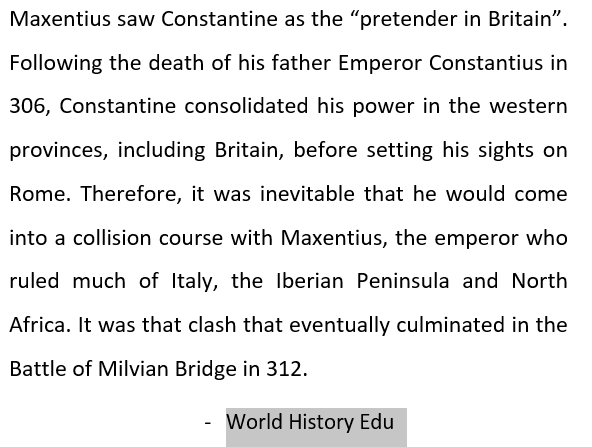
Constantine Conquers East Rome
In 316, a battle over the Balkan territory was fought between Constantine and Licinius. Victory went to Constantine, but it did not end there. The war between the Eastern and Western emperors continued for years. Collectively, these wars were known as the “Tetrarchy Civil Wars.” They were some of the major battles fought by Constantine after he rose to power.
In the long run, one ruler lost his throne; that happened in 324 when Constantine defeated Licinius. He then combined powers of Eastern and Western Rome and reigned as the overall emperor.
Contributions to Christianity
Throughout Constantine’s reign, several developments, ranging from administrative, financial and religious reforms, were introduced to strengthen the Roman Empire. One notable achievement of Emperor Constantine was in Christianity. There is a short story about how and why Constantine became so attached to Christianity.
Power of Christianity/ Battle of Milvian Bridge
Around 303 AD, Christians were persecuted in the Diocletian kingdom. Growing up in East Rome, Constantine allegedly witnessed pagans do their own things. However, Christians were constantly suppressed. Many churches were destroyed, some Christians were arrested while others were executed.
Being a strong military leader, Constantine fought great battles with his father before succeeding him. He emerged victorious in battles against Samartians, Franks, Alamanni and the Visgoths. In October 312, Constantine’s soldiers clashed with Maxentius’ army. When the two rivals met at the Tiber River, his soldiers were outnumbered two times by the Maxentius forces.
According to popular legends, Constantine supposedly had an out-of-this-world night interaction with Jesus and was instructed to let his soldiers use the Christian Cross during the battle. Constantine and his soldiers obliged and used the cross. They miraculously emerged victoriously and were able to cross to Rome. Their victory convinced Constantine to legalize Christianity while guaranteeing freedom of worship. This “Edict of Milan” he signed with Licinius was a big moment for Christians in Rome.
Why did Roman Emperor Constantine the Great convert to Christianity?
Founded the City of Constantinople
Following his victory over Licinius, Eastern Rome was integrated into the West as one empire ruled by Constantine. To serve as a new capital and a physical symbol of the unification of the east and west, the city of Constantinople (present-day Istanbul) was founded in Eastern Rome in 324 AD. It was put up at the Byzantium site. Constantinople became well-known for its security and attractive environments; it had water fountains and sports facilities to match its royal stature.
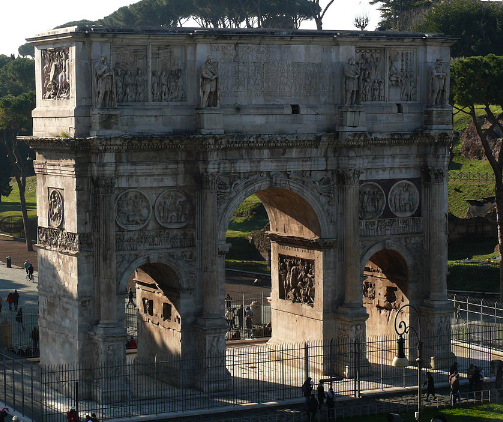
Constantine the Great stands as a monumental figure in history. His decision to embrace Christianity, coupled with his political acumen, reshaped the Roman Empire and set the course for the development of Christian Europe. Image: The Arch of Constantine was built in such a way that it aligned with the massive statue of Sol near the Colosseum.
The Nicene Creed
Another great pillar of Christianity was founded in 325; Emperor Constantine held a meeting with the “Council of Nicaea”. This was the birthplace of the famous “Nice Creed”. The Nicene Creed shares similar views with St. Paul, backing the divinity of Jesus Christ.
Due to Constantine’s great contribution to Christianity and religion as a whole, Catholics, Anglicans, and Eastern Orthodox Churches highly revere him as a saint. Aside from being the first Roman emperor to sanction Christianity, he is credited with the establishment of the “Church of Holy Sepulchre” in Jerusalem.
Marriage Life
Constantine allegedly married or dated Minervina in 303. He and Minervina brought forth a son named Crispus. He left Minervina and got married to Fausta (daughter of Maximian).
In the 320s, Constantine killed Fausta and his first son Crispus. He also erased all their memories by removing their names from all inscriptions. Some accounts suggest that he likely executed them because of their immoral lives.
How did Constantine’s vision at Milvian Bridge facilitate the spread of Christianity?
After the celebration of Easter in 337 AD, Emperor Constantine was taken down by a severe illness. Many people believe that he got baptized and fully converted to Christianity while he was on his death bed. After failing to recover from his ailment, he tried to return to Constantinople, but his health condition didn’t allow him. Constantine passed away on 22nd May 337 AD, at Ancyrona, close to Nicomedia.
Due to the uncertainty surrounding Constantine’s date of birth, it has been approximated that he was probably 57-65 years at the time of his death. His Fausta-born three sons (Constans, Constantine II, and Constantius II) succeeded him.
Constantine has been regarded by many people as a “paragon of virtue”. His war achievements is a tall list of victories on top of victories. Apart from his ability to unite the two empires (the East and West Rome), he tackled the religious crisis in ancient Rome by being the first ruler to legalize Christianity and then promote religious freedoms.

These questions and their answers represent a basic overview of one of the greatest Roman Emperors in history:
Why is Constantine significant in Christian history?
Constantine played a crucial role in the spread and institutionalization of Christianity. He issued the Edict of Milan in 313, which granted religious tolerance to Christians, ending years of persecution. He also convened the First Council of Nicaea in 325, which sought to address theological disputes and establish key Christian doctrines.
What is the Edict of Milan?
The Edict of Milan, issued in 313, was a proclamation that permanently established religious tolerance for Christianity within the Roman Empire. It allowed Christians to practice their faith freely without the threat of persecution.
What was the First Council of Nicaea?
In 325, Constantine convened the First Council of Nicaea, which was the first ecumenical council of the Christian Church. The council aimed to achieve consensus on several theological issues, most notably the nature of the relationship between God the Father and Jesus. The Nicene Creed, a statement of Christian faith, was a key product of this council.
Did Constantine make Christianity the official religion of the Roman Empire?
No, he did not make Christianity the official religion. However, he granted it legal status and afforded it many privileges. It was Emperor Theodosius I, later in 380 AD, who declared Nicene Christianity the state religion of the Roman Empire.
Where did Constantine establish his new capital?
He understood the strategic importance of Byzantium, so he refounded and expanded the city, renaming it “Nova Roma” (New Rome). However, it became popularly known as Constantinople (City of Constantine). Today, it is known as Istanbul, Turkey.
Did he ever get baptized?
Yes, but not until he was on his deathbed. He was baptized in May 337, just shortly before his death.
How did Constantine impact the architecture and art of the Roman Empire?
Under Constantine, there was a significant rise in the construction of Christian basilicas, churches, and other sacred sites. The Arch of Constantine, built to commemorate his victory at the Battle of Milvian Bridge, is a notable architectural accomplishment from his reign.
What is the story behind Constantine’s conversion to Christianity?
It is said that before the Battle of Milvian Bridge in 312, Constantine experienced a vision of the Christian symbol (often described as the Chi-Rho) accompanied by the words “In this sign, you will conquer.” He then had his soldiers paint the symbol on their shields, and after winning the battle, he credited his victory to the Christian God.
When and where did this Roman Emperor die?
Constantine died on May 22, 337 AD, at the age of 65. He passed away at a villa near the city of Nicomedia in present-day Turkey.
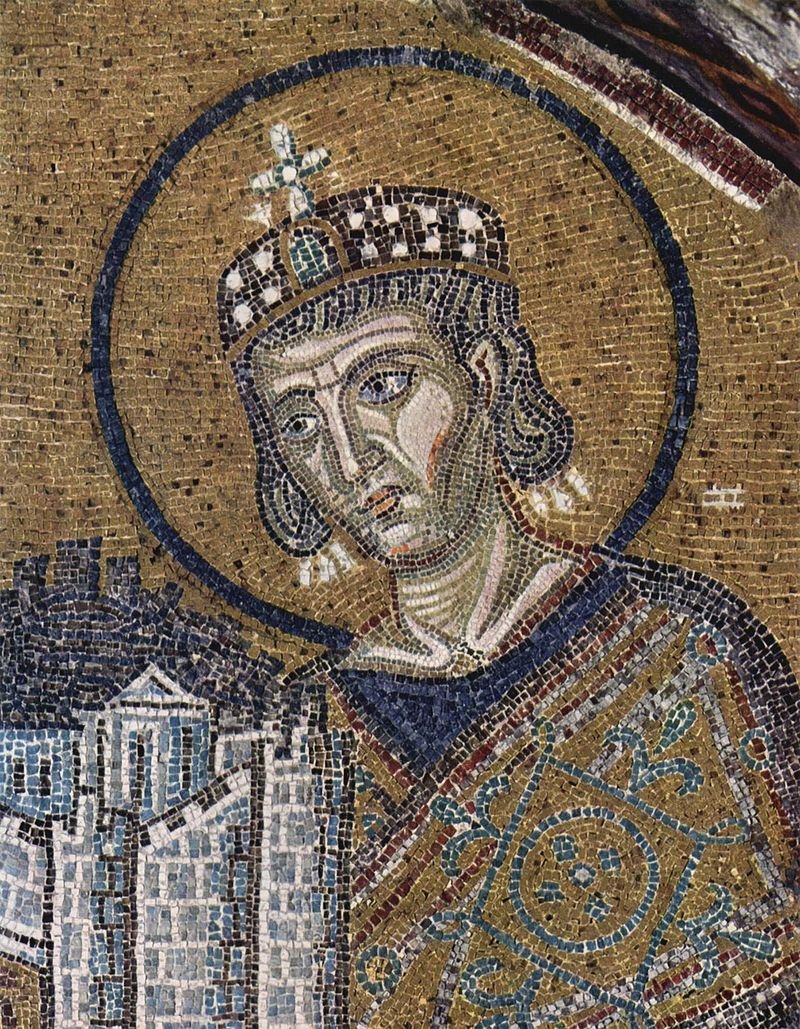
Securing some kind of divine legitimacy was undoubtedly one of the reasons why Constantine chose the Christian faith. Portrait of Emperor Constantine I with a model of the city of Constantinople (modern Istanbul in Turkiye)
Tags: Constantine Constantine biography Constantine's achievements Constantinople Flavius Valerius Constantius Istanbul Tetrarchy Civil Wars
You may also like...

Ancient Rome: Timeline
October 14, 2021
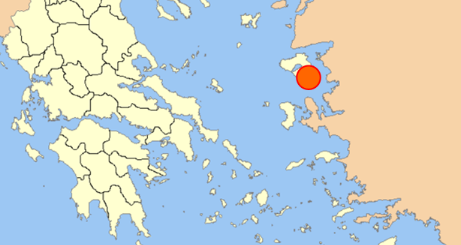
Siege of Mytilene in 81 BC
May 16, 2023
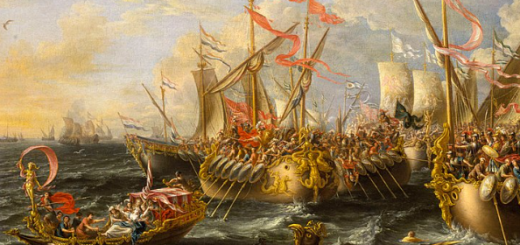
Battle of Actium in 31 BC: Causes, Importance, & Frequently Asked Questions
August 13, 2023
Leave a Reply Cancel reply
Your email address will not be published. Required fields are marked *
Save my name, email, and website in this browser for the next time I comment.
- Next story The Life and Major Accomplishments of Ronald Reagan
- Previous story How was Queen Elizabeth II brought up as a child?
- Popular Posts
- Recent Posts

Life, Political Career and Accomplishments of William Pitt the Younger

Most Historic Joint Session of the United States Congress

History of the Tang dynasty and why it is considered the Golden Age in Chinese history

What was the perception of miasma from around the world?

History of the Last Supper Painting and the technique used by da Vinci

Greatest African Leaders of all Time

Queen Elizabeth II: 10 Major Achievements

Donald Trump’s Educational Background

Donald Trump: 10 Most Significant Achievements

8 Most Important Achievements of John F. Kennedy

Odin in Norse Mythology: Origin Story, Meaning and Symbols

Ragnar Lothbrok – History, Facts & Legendary Achievements

9 Great Achievements of Queen Victoria

12 Most Influential Presidents of the United States

Most Ruthless African Dictators of All Time

Kwame Nkrumah: History, Major Facts & 10 Memorable Achievements

Greek God Hermes: Myths, Powers and Early Portrayals

8 Major Achievements of Rosa Parks

10 Most Famous Pharaohs of Egypt

How did Captain James Cook die?

Kamala Harris: 10 Major Achievements

Poseidon: Myths and Facts about the Greek God of the Sea

How and when was Morse Code Invented?

Nile River: Location, Importance & Major Facts

The Exact Relationship between Elizabeth II and Elizabeth I
- Adolf Hitler Alexander the Great American Civil War Ancient Egyptian gods Ancient Egyptian religion Apollo Athena Athens Black history Carthage China Civil Rights Movement Cold War Constantine the Great Constantinople Egypt England France Germany Ghana Hera Horus India Isis John Adams Julius Caesar Loki Military Generals Military History Nobel Peace Prize Odin Osiris Pan-Africanism Queen Elizabeth I Ra Ragnarök Religion Set (Seth) Soviet Union Thor Timeline Women’s History World War I World War II Zeus
- Corrections
Who Was Constantine the Great and What Did He Accomplish?
Constantine the Great was one of the most important Roman emperors whose policies and choices reshaped not only the Roman Empire but also our world.

Without a doubt, Constantine the Great is one of the most influential Roman emperors . He came to power in the pivotal moment for the empire, after winning a decades-long civil war. As the sole ruler of the Roman Empire, Constantine I personally oversaw the major monetary, military and administrative reforms, laying the foundation for the strong and stable fourth-century state. By leaving the Roman Empire to his three sons, he established a powerful imperial dynasty. Constantine the Great is, however, best known for accepting Christianity, a watershed moment that led to rapid Christianization of the Roman Empire, changing not only the fate of the Empire but of the entire world. Lastly, by moving the imperial capital to the newly founded Constantinople , Constantine the Great ensured the Empire’s survival in the East, centuries after the fall of Rome.
Constantine the Great Was a Son of the Roman Emperor

Flavius Valerius Constantius, future emperor Constantine the Great , was born in 272 CE in the Roman province of Upper Moesia (present-day Serbia). His father, Constantius Chlorus, was a member of Aurelian ’s bodyguard, who later became emperor in the Tetrarchy of Diocletian . By dividing the Roman Empire between the four rulers, Diocletian hoped to avoid civil wars that plagued the state during the Third Century Crisis . Diocletian peacefully abdicated, but his system was doomed to fail. Following Constantius’ death in 306, his troops immediately proclaimed Constantine emperor, clearly violating the meritocratic Tetrarchy. What followed was the two-decade-long civil war.
He Won the Crucial Battle at the Milvian Bridge

The decisive moment in the civil war came in 312 CE, when Constantine I defeated his rival, emperor Maxentius, at the Battle of the Milvian Bridge outside Rome. Constantine was now in full control of the Roman West. But, more importantly, the victory over Maxentius marked a crucial threshold in the Roman Empire’s history. Apparently, prior to the battle, Constantine saw a cross in the sky and was told: “In this sign shall you conquer.” Encouraged by the vision, Constantine ordered his troops to paint their shield with the chi-rho emblem ( initials symbolizing Christ). The Arch of Constantine , built to commemorate the victory over Maxentius, still stands in the center of Rome.

Constantine the Great Made Christianity the Official Religion

Get the latest articles delivered to your inbox
Please check your inbox to activate your subscription.
Following his triumph, in 313 CE, Constantine and his co-emperor Licinius (who ruled the Roman East) issued the Edict of Milan, declaring Christianity one of the official imperial religions. Direct imperial support laid the strong foundation for the Christianization of the Empire and, eventually, the world. It is hard to say if Constantine was a true convert or an opportunist who saw the new religion as a possibility to bolster his political legitimacy. After all, Constantine played an essential role at the Council of Nicaea , which laid down the principles of Christian belief – the Nicene Creed. Constantine the Great could also see Christian God as a reflection of Sol Invictus, an oriental deity and patron of the soldiers, introduced into the Roman pantheon by soldier-emperor Aurelian.
Emperor Constantine I Was a Great Reformer

In 325 CE, Constantine defeated his last rival, Licinius, becoming the sole master of the Roman world. Finally, the emperor could push major reforms to reorganize and strengthen the beleaguered Empire and earn his sobriquet of “the Great.” Building upon Diocletian’s reforms, Constantine reorganized the imperial military into frontier guards ( limitanei ), and a smaller but mobile field army ( comitatensis ), with elite units ( palatini ). The old Praetorian Guard fought against him in Italy, so Constantine dissolved them. The new army proved efficient in one of the last imperial conquests, the brief takeover of the Dacia . To pay his troops and strengthen the Empire’s economy, Constantine the Great strengthened the imperial coinage, introducing the new gold standard – solidus – which contained 4.5 grams of (almost) solid gold. Solidus would retain its value until the eleventh century.
Constantinople – The New Imperial Capital

One of the most far-reaching decisions made by Constantine was the foundation of Constantinople ( what was Constantinople ) in 324 CE – the new capital of the rapidly Christianizing Empire. Unlike Rome, the city of Constantine was easily defensible due to its prime geographic location and well-protected harbors. It was also close to the imperiled frontier zones on the Danube and the East, allowing for a faster military response. Lastly, being located at the crossroads of Europe and Asia and on the terminus of the famed Silk Roads meant that the city quickly became an incredibly wealthy and thriving metropolis. After the fall of the Roman West, Constantinople remained the imperial capital for more than a thousand years.
Constantine the Great Established the New Imperial Dynasty

Unlike his mother, Helena, a staunch Christian and one of the first pilgrims, the emperor took the baptism only on his deathbed. Soon after his conversion, Constantine the Great died and was buried in the Church of Holy Apostles in Constantinople. The emperor left the Roman Empire to his three sons – Constantius II, Constantine II and Constans – thus establishing the powerful imperial dynasty. His successors did wait long to plunge the Empire into another civil war. However, the Empire reformed and strengthened by Constantine endured. The last emperor of the Constantinian dynasty – Julian the Apostate – embarked on the ambitious but ill-fated Persian campaign. More importantly, Constantine’s city – Constantinople – ensured the survival of the Roman Empire (or the Byzantine Empire ) and Christianity, his lasting legacy, in the following centuries.

6 Roman Emperors that Shaped the History of Rome

By Vedran Bileta MA in Late Antique, Byzantine, and Early Modern History, BA in History Vedran is a doctoral researcher, based in Budapest. His main interest is Ancient History, in particular the Late Roman period. When not spending time with the military elites of the Late Roman West, he is sharing his passion for history with those willing to listen. In his free time, Vedran is wargaming and discussing Star Trek.

Frequently Read Together

What Was the Roman Empire?

Which Were The 5 Greatest Ancient Roman Cities (After Rome)?

Was Constantine a ‘Great’ Emperor?
English History
Constantine The Great
- Born: 27 February 272, Naissus, Moesia, Roman Empire (modern-day Serbia)
- Died: 22 May 337 (aged 65), Achyron, Nicomedia, Bithynia, Roman Empire (modern day İzmit, Kocaeli, Turkey)
- Reign: 25 July 306 – 22 May 337
Constantine I, known as Constantine the Great or just Constantine, born Flavius Valerius Constantinus, was Roman emperor, reigning from 306 to 337. He was born in Naissus, Dacia Mediterranea (now Niš, Serbia) and was the son of Flavius Constantius (who had been one of the four emperors of the Tetrarchy) and Helena.
Following his father’s death in 306, Constantine became emperor, and emerged victorious in the civil wars against emperors Maxentius and Licinius to become the sole ruler of the Roman Empire by 324.
During his time as emperor, Constantine the Great helped to strengthen the empire by restructuring the government and separating civil and military authorities. He also pursued successful campaigns against the Franks, the Alamanni, the Goths and the Sarmatians.
One of Constantine the Great’s most significant acts, however, was being the first Roman emperor to embrace Christianity. Although he didn’t convert to Christianity until he was in his 40s, he is credited with the beginning of Christendom through the way in which he supported the church and helped Christianity to become more accepted in the empire.
Early Life of Constantine The Great
Constantine the Great was born in Naissus (modern Niš, Serbia) in the province of Moesia Superior on 27 February 272 or 273. His parents were Constantius Chlorus and Helena, an innkeeper’s daughter who at the time was only sixteen years old. His father left his mother around 292 and married Flavia Maximiana Theodora, who was the daughter or step-daughter of the Western Roman Emperor Maximian. Theodora gave birth to six half-siblings of Constantine, including Julius Constantius.
Constantine served at the court of Diocletian in Nicomedia, after the appointment of his father as one of the two caesares (junior emperors) of the Tetrarchy in 293. Here he studied Latin literature, Greek, and philosophy and received a good education. He was able to mix with intellectuals both pagan and Christian.
At the time of Constantine the Great’s birth, the Roman empire was recovering from a period of civil war and was ruled by the Tetrarchy, a hierarchy of four emperors: the senior two were titled Augustus (as Constantine and his father) with two c aesars answerable to them. The emperors were military men deployed with their armies less in Rome than in key points near the borders of the empire, governing the population and repelling external enemies. It was a system that brought stability and succession problems alike.
For example, when both augusti (senior emperors), Diocletian and Maximian, abdicated, Constantine’s father, Constantius, succeeded to Maximian’s position of western augustus . However, although two legitimate sons of emperors were available (Constantine and Maxentius, the son of Maximian), both of them were overlooked in this transition of power.
Instead, Flavius Valerius Severus and Maximinus Daia were made caesares . Constantine subsequently left Nicomedia to join his father in Roman Gaul. However, Constantius fell sick during an expedition with his army against the Picts of Caledonia (Scotland), and died on July 25, 306 in Eboracum (York). The general Chrocus and the soldiers loyal to Constantius’ memory immediately proclaimed Constantine an augustus .
Despite this, Constantine’s succession as augustus was of dubious legitimacy under the Tetrarchy. While Constantius as senior emperor could “create” a new caesar , Constantine’s claim to the title of augustus ignored the system of succession established in 305. Therefore, Constantine asked Galerius, the eastern augustus , to be recognized as heir to his father’s throne. Galerius granted him the title of caesar , allowing Constantine’s rule over his father’s territories, and promoted Severus to augustus of the West.
Early Rule of Constantine The Great
Ruling over his father’s territories gave Constantine Roman Britain, Roman Gaul, the Germanic provinces, and Hispania (Spain) to rule over, meaning he commanded one of the largest Roman armies stationed along the important Rhine frontier. His main goal was stability, and he tried to achieve that by immediate, often brutal punitive expeditions against rebellious tribes.
Gaul had suffered much during the Crisis of the Third Century, with many cities being ruined and areas being depopulated. From 306 to 316, Constantine resided in Trier and continued his father’s efforts to secure the Rhine frontier and rebuild the Gallic provinces. He abandoned his father’s British campaign and returned to Gaul to quell an uprising by Franks after becoming emperor, and in 308 led another expedition against Frankish tribes. Following this victory, he began to build a bridge across the Rhine at Cologne to establish a permanent stronghold on the right bank of the river.
Constantine also began a major expansion of Trier, strengthening the circuit wall around the city with military towers and fortified gates, and he began building a palace complex in the northeastern part of the city. To the south of his palace, he ordered the construction of a large formal audience hall and a massive imperial bathhouse.
Maxentius and Maximian
Maxentius, son of Maximian, was jealous of Constantine’s authority and seized the title of emperor on 28 October AD 306. Galerius refused to recognize him but failed to unseat him. Instead, Galerius sent Severus against Maxentius, but during the campaign, Severus’ armies, previously under command of Maxentius’ father Maximian, defected, and Severus was seized and imprisoned.
Maximian was then brought out of retirement by his son’s rebellion and left for Gaul to confer with Constantine in late AD 307. He offered to marry his daughter Fausta to Constantine and elevate him to augustan rank. In return, Constantine would reaffirm the old family alliance between Maximian and Constantius and offer support to Maxentius’ cause in Italy. Constantine accepted and married Fausta in Trier in late summer AD 307. Constantine now gave Maxentius his meagre support, offering Maxentius political recognition.
Despite this, Constantine did not interfere on Maxentius’ behalf. Having failed to overthrow his son, Maximian returned to Gaul in 308. On 11 November AD 308, Galerius called a general council at the military city of Carnuntum (Petronell-Carnuntum, Austria), where Diocletian, Galerius and Maximian met.
However, Maximian was forced to abdicate again and Constantine was reduced to caesar . Licinius, one of Galerius’ old military companions, was appointed augustus in the western regions. Constantine refused to accept the demotion, and continued to style himself as augustus . Maximinus was frustrated that he had been passed over for promotion while the newcomer Licinius had been raised to the office of augustus . He demanded that Galerius promote him. Galerius offered to call both Maximinus and Constantine “sons of the augusti ”, but neither accepted the new title. By the spring of AD 310, Galerius was referring to both men as augusti .
Maximian rebelled against Constantine while Constantine was away campaigning against the Franks in AD 310. Maximian announced that Constantine was dead, and took up the imperial purple. Despite this, most of Constantine’s army remained loyal to their emperor, and Maximian was soon forced to leave. When Constantine heard of the rebellion, he strongly encouraged Maximian’s suicide. In July AD 310, Maximian hanged himself.
Battle of Milvian Bridge
In the summer of AD 311, Maxentius proclaimed that he wanted to take revenge for his father’s death. Therefore, he mobilized against Constantine while Licinius was occupied with affairs in the East. However, to stop Maxentius from forming an alliance against him with Licinius, Constantine forged his own alliance with Licinius over the winter of 311–12, and offered him his sister Constantia in marriage.
Constantine was very successful in defeating a large force of heavily armed Maxentian cavalry, including in Segusium (Susa, Italy) and Augusta Taurinorum (Turin, Italy). A few cities, Verona, Aquileia, Mutina (Modena), and Ravenna, surrendered shortly afterwards.
The Battle of Milvian Bridge allowed Constantine to claim the emperorship in the West. The battle was brief and Maxentius’ troops were broken before the first charge. Constantine deployed his own forces along the whole length of Maxentius’ line and ordered his cavalry to charge, breaking Maxentius’ cavalry. He then sent his infantry against Maxentius’ infantry, pushing many into the Tiber where they were slaughtered and drowned. Maxentius himself was pushed by the mass of his fleeing soldiers into the Tiber, and drowned.
Following the battle, Constantine became Western Augustus, or ruler of the entire Western Roman Empire.
Constantine entered Rome on 29 October AD 312. Maxentius’ body was fished out of the Tiber and decapitated, and his head was paraded through the streets for all to see.
Constantine visited the Senatorial Curia Julia, promising to restore its ancestral privileges and give it a secure role in his reformed government. There would be no revenge against Maxentius’ supporters. In response, the Senate decreed him “title of the first name”, which meant that his name would be listed first in all official documents, and they acclaimed him as “the greatest Augustus”.
Constantine issued decrees returning property lost under Maxentius, recalling political exiles, and releasing Maxentius’ imprisoned opponents. An extensive propaganda campaign followed, in which Maxentius’ image was systematically purged from all public places. Maxentius was written up as a “tyrant,” which allowed for an idealized image of the “liberator,” Constantine.
Edict Of Milan
In 313, Constantine met Licinius in Milan to secure their alliance by the marriage of Licinius and Constantine’s half-sister Constantia. During this meeting, the emperors agreed on the so-called Edict of Milan, officially granting full tolerance to all religions in the empire, especially Christianity.
This document had special benefits for Christians, as it legalized their religion and granted them restoration for all property seized during Diocletian’s persecution. Christianity had previously been decriminalized in April 311 by Galerius, who was the first emperor to issue an edict of toleration for all religious creeds, including Christianity, but the Edict of Milan removed all obstacles to the Christian faith.
However, the conference was cut short, when news reached Licinius that his rival Maximinus Daia had crossed the Bosporus and invaded Licinian territory. Licinius departed and eventually defeated Maximinus, gaining control over the entire eastern half of the Roman Empire.
Despite this, relations between Constantine and Licinius declined and either in 314 or 316, the two emperors fought against one another in the war of Cibalae, with Constantine being victorious. They clashed again in the Battle of Campus Ardiensis in 317, and agreed to a settlement in which Constantine’s sons Crispus and Constantine II, and Licinius’ son Licinianus were made caesars .
Constantine The Great and Christianity
Constantine was the first Roman emperor to embrace Christianity, having been introduced to Christianity by his mother, Helena. It is unclear whether he adopted his mother’s Christianity in his youth or whether he adopted it gradually over the course of his life.
He was over the age of 40 by the time he actually declared himself a Christian, but there has been much speculation as to whether his conversion was genuine or strategic. He may have thought that as Christians grew more numerous, that it made sense to gain their support. He also waited to be baptized on his deathbed, believing that the baptism would release him of any sins he committed in the course of carrying out his policies while emperor.
With Constantine’s succession came the beginning of Christendom. He supported the Church financially, built basilicas, granted privileges to clergy (such as exemption from certain taxes), promoted Christians to high office, and returned property confiscated during the long period of persecution. His most famous building projects include the Church of the Holy Sepulchre and Old Saint Peter’s Basilica. He also made Sunday a holiday and day of rest throughout the empire.
Constantine considered himself responsible to God for the spiritual health of his subjects, and that he had a duty to maintain orthodoxy. He ensured that God was properly worshiped in his empire, establishing a precedent for the position of the Christian Emperor in the Church.
Constantine also made some laws that affected Jews. Jews were forbidden to own Christian slaves or to circumcise their slaves, and conversion of Christians to Judaism was outlawed. Congregations for religious services were also restricted.
Later Rule of Constantine The Great
In the year 320, Licinius, emperor of the Eastern Roman Empire, went back on his decisions on the religious freedom promised by the Edict of Milan in 313 and began another persecution of Christians. This was a puzzling inconsistency since Constantia, half-sister of Constantine and wife of Licinius, was an influential Christian.
This became a huge challenge for Constantine in the west, and it climaxed in the great civil war of 324, in which the armies were so large that the size of them would not be seen again until at least the fourteenth century.
Licinius, aided by Goth mercenaries, represented the past and the ancient faith of Paganism. Constantine and his Franks marched under the Christian standard of the labarum , and Constantine’s army emerged victorious.
While Constantine had publicly promised to spare Licinius’ life, a year later he accused him of plotting against him and had him executed by strangulation. The defeat and death of Licinius resulted in Constantine becoming the sole emperor of the entire Roman Empire.
With Licinius’ death came the passing of old Rome, and the beginning of the role of the Eastern Roman Empire as a center of learning, prosperity, and cultural preservation. Constantine rebuilt the city of Byzantium, and renamed it Nova Roma (New Rome), providing it with a Senate and civic offices similar to those of Rome. The new city was protected by an alleged relic of the True Cross, the Rod of Moses and other holy relics.
After Constantine’s death, his capital was renamed Constantinopolis (in English Constantinople, “Constantine’s City”). Constantinople was a new, Christian city for the new, Christian empire. It was to be nobler than Rome because Rome’s foundation were pagan.
Council of Nicaea
In 325, Constantine summoned the Council of Nicaea, which was effectively the first Ecumenical Council. This was significant because it was the first effort to attain consensus in the church through an assembly representing all of Christendom. Christians within the empire were divided over what they believed about Jesus and the Trinity. In Alexandria there was a group who were followers of Arius with whom the majority of Christians disagreed, leading to threats to close the port and economic and political implications.
With the Council of Nicaea, Constantine invited and offered to sponsor all 1800 bishops. The result came out against Arianism and five dissenters were banished and Constantine threatened anyone who did not deliver Arius’ books up to be burned with death. Although Constantine was not baptized and held no position within the church, he had a lot of control over the church.
Constantine also enforced the prohibition of the First Council of Nicaea against celebrating Easter on the day before the Jewish Passover, which marked a definite break of Christianity from the Judaic tradition. It was thought this was motivated by bitterness towards Judaism.
Other Reforms
Throughout his reign, Constantine passed numerous laws. While many of these reflected his Christian reforms, they also improved many of the laws set out by his predecessors. For example, he made laws that a prisoner was no longer to be kept in total darkness, but must be given access to the outdoors and daylight, and young females could not be abducted. Slave master’s rights were limited, although a slave could still be beaten to death, and a condemned man was allowed to die in the arena, but he could not be branded on his “heavenly beautified” face, just on his feet.
Constantine also made monetary reforms. He introduced the solidus, a new gold coin that became the standard for Byzantine and European currencies for more than a thousand years. This was to help battle inflation.
Executions of Crispus and Fausta
Between 15 May and 17 June 326, Constantine had his his eldest son Crispus tried and executed, by “cold poison” at Pola (Pula, Croatia), as he believed accusations that Crispus had an affair with Fausta, Constantine’s second wife. A few months later, in July, he also had Fausta killed in an overheated bath, as she was deemed to be the apparent source of these false accusations.
Their names were wiped from the face of many inscriptions, references to their lives were eradicated from the literary record, and their memory was condemned.
Later Campaigns
Later on in Constantine’s life, he spent most of his time in Constantinople. Construction was completed on Constantine’s Bridge at Sucidava, (today Celei in Romania) in 328, and in 332, Constantine campaigned with the Sarmatians against the Goths. However, Constantine then went on to lead a campaign against the Sarmatians and won, extending his control over the region.
Constantine the Great also made plans for a campaign against Persia and asserted his patronage over Persia’s Christian subjects in a letter. He called for bishops to accompany the army and commissioned a tent in the shape of a church to follow him everywhere.
It was at this time he also planned to be baptized in the Jordan River before crossing into Persia, but the campaign was called off when Constaint got sick in the spring of 337.
Illness and Death
Soon after the Feast of Easter 337, Constantine fell seriously ill and he left Constantinople for Helenopolis (Altinova). His mother had built a church there in honor of Lucian the Apostle, and Constantine prayed there but realized he was dying.
He summoned the bishops and told them that he wanted to be baptized in the River Jordan, where Christ was written to have been baptized. He asked for the baptism right away, promising to live a more Christian life should he live through his illness. He chose the Arianizing bishop Eusebius of Nicomedia, bishop of the city where he lay dying, as his baptizer.
After being baptized, he died soon after at a suburban villa called Achyron. This was on the last day of the fifty-day festival of Pentecost directly following Pascha (or Easter) — on 22 May 337.
Following his death, Constantine was succeeded by the three sons he had with Fausta — Constantine II, Constantius II, and Constans. He also had two daughters Constantina and Helena, who was wife of Julian the Apostate.
Importance and Historical Significance of Constantine The Great
Constantine the Great is most significantly remembered for being the first Roman emperor to embrace Christianity. His accession as emperor is generally considered the beginning of Christendom, and he made Sunday a holiday and day of rest throughout the empire. He also supported the church financially built various basilicas, granted privileges to clergy and promoted Christians to high ranking offices.
Constantine is also remembered for reuniting the empire under one emperor. He had many victories in his time as emperor, including over the Franks and Alamanni (306–308), the Franks again (313–314), the Visigoths in 332 and the Sarmatians in 334. He also reoccupied most of the long-lost province of Dacia, which Aurelian had been forced to abandon in 271.
What’s more, Constantine is historically significant for reviving the clean-shaven face fashion of earlier emperors, originally introduced among the Romans by Scipio Africanus and changed into the wearing of the beard by Hadrian. This new Roman imperial fashion lasted until the reign of Phocas.
Constantine The Great FAQs
Why does constantine have “the great” in his name.
Constantine was not known as Constantine the Great until years after his death. He is called this because of his successes, particularly for uniting the whole of the Roman Empire under one ruler, and for his many military victories.
Was Constantine The Great really a Christian?
Constantine The Great is remembered for being the first Roman Emperor to embrace Christianity, but there is still some speculation as to whether he was really a Christian. This speculation comes from the fact that he waited until he was on his death bed to be baptized, and the fact that Christianity was growing, so he may have decided to vocalize his faith to gain more supporters.
Despite this, his mother had introduced him to Christianity at a young age and over the course of his life he did a lot to support the Christians. Constantine’s succession is considered the beginning of Christendom, because he supported the Church financially, built basilicas, granted privileges to clergy, promoted Christians to high office, and returned property confiscated during the long period of persecution. He also made Sunday a holiday and day of rest throughout the empire.
How successful was Constantine The Great?
Constantine The Great was very successful in his time. Over his life, he defeated his main rival for the Western emperorship in 312 and defeated the Eastern emperor in 324, making him the sole ruler of the Roman Empire. He had many military victories during his time, including reoccupying most of the long-lost province of Dacia. One of his most successful acts, however, was being the first Christian Roman Emperor.
Link/cite this page
If you use any of the content on this page in your own work, please use the code below to cite this page as the source of the content.
Link will appear as Hanson, Marilee. "Constantine The Great" https://englishhistory.net/romans/constantine-the-great/ , May 10, 2022
Ancient Rome
Biography of constantine the great.
Biographies >> Ancient Rome
- Occupation: Roman Emperor
- Born: February 27, 272 AD in Naissus, Serbia
- Died: May 22, 337 AD in Nicomedia, Turkey
- Best known for: Being the first Roman Emperor to convert to Christianity and establishing the city of Constantinople
- Also known as: Constantine the Great, Constantine I, Saint Constantine

- His birth name was Flavius Valerius Constantinus.
- The city of Constantinople was the largest and richest city of the Byzantine Empire during the Middle Ages. It became the capital of the Ottoman Empire in 1453. Today it is the city of Istanbul, the most populous city in the country of Turkey .
- He sent his mother Helena to the Holy Land where she found pieces of the cross that Jesus was crucified on. She was made Saint Helena as a result.
- Some accounts say that Constantine saw the Greek letters Chi and Rho in his dream and not the cross. Chi and Rho represented the spelling of Christ in Greek.
- He wasn't baptized as a Christian until shortly before his death.
- In the year 326 he had both his wife Fausta and his son Crispus put to death.
- Listen to a recorded reading of this page:
Back to History for Kids
Follow live: The Supreme Court tackles claims that Trump has total immunity from criminal charges. Listen to live arguments.
Constantine, the former and last king of Greece, dies at 82
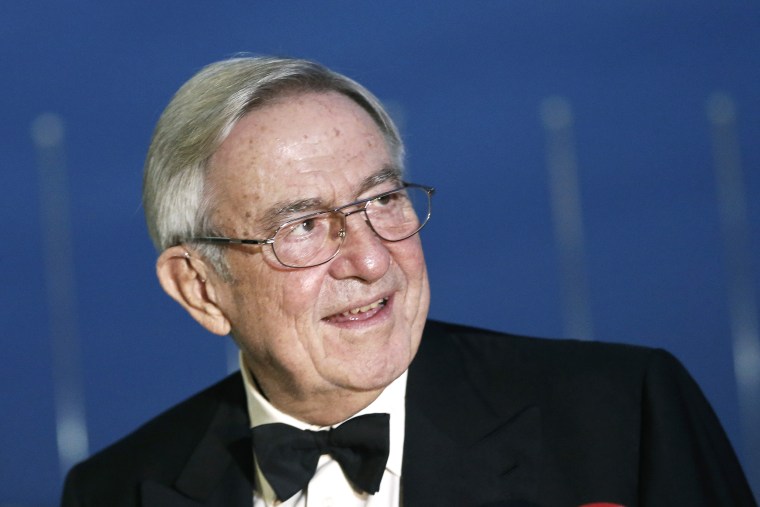
ATHENS, Greece — Constantine, the former and last king of Greece, who won an Olympic gold medal before becoming entangled in his country’s volatile politics in the 1960s as king and spent decades in exile, has died. He was 82.
Doctors at the private Hygeia Hospital in Athens confirmed to The Associated Press that Constantine died late Tuesday after treatment in an intensive care unit but had no further details pending an official announcement.
When he acceded to the throne as Constantine II 1964 at the age of 23, the youthful monarch, who had already achieved glory as an Olympic gold medalist in sailing, was hugely popular. By the following year, he had squandered much of that support with his active involvement in the machinations that brought down the elected Center Union government of prime minister George Papandreou.

The episode involving the defection from the ruling party of several lawmakers, still widely known in Greece as the “apostasy,” destabilized the constitutional order and led to a military coup in 1967. Constantine eventually clashed with the military rulers and was forced into exile.
The dictatorship abolished the monarchy in 1973, while a referendum after democracy was restored in 1974 dashed any hopes that Constantine had of ever reigning again.
Reduced in the following decades to only fleeting visits to Greece that raised a political and media storm each time, he was able to settle again in his home country in his waning years when opposing his presence no longer held currency as a badge of vigilant republicanism. With minimal nostalgia for the monarchy in Greece, Constantine became a relatively uncontroversial figure.
Born into royalty
Constantine was born June 2, 1940, in Athens, to Prince Paul, younger brother to King George II and heir presumptive to the throne, and princess Federica of Hanover. His older sister Sophia is the wife of former King Juan Carlos I of Spain. The Greek-born Prince Philip, the late Duke of Edinburgh and husband of the United Kingdom’s late Queen Elizabeth II, was an uncle.
The family, which had ruled in Greece from 1863 apart from a 12-year republican interlude between 1922-1935, was descended from Prince Christian, later Christian IX of Denmark, of the House of Schleswig-Holstein-Sonderburg-Glücksburg branch of the Danish ruling family.
Before Constantine’s first birthday, the royal family was forced to flee Greece during the German invasion in World War II, moving to Alexandria in Egypt, South Africa and back to Alexandria. King George II returned to Greece in 1946, following a disputed referendum, but died a few months later, making Constantine the heir to King Paul I.
Constantine was educated at a boarding school and then attended all three military academies as well as Athens Law School classes as preparation for his future role. He also competed in various sports, including sailing and karate, in which he held a black belt.
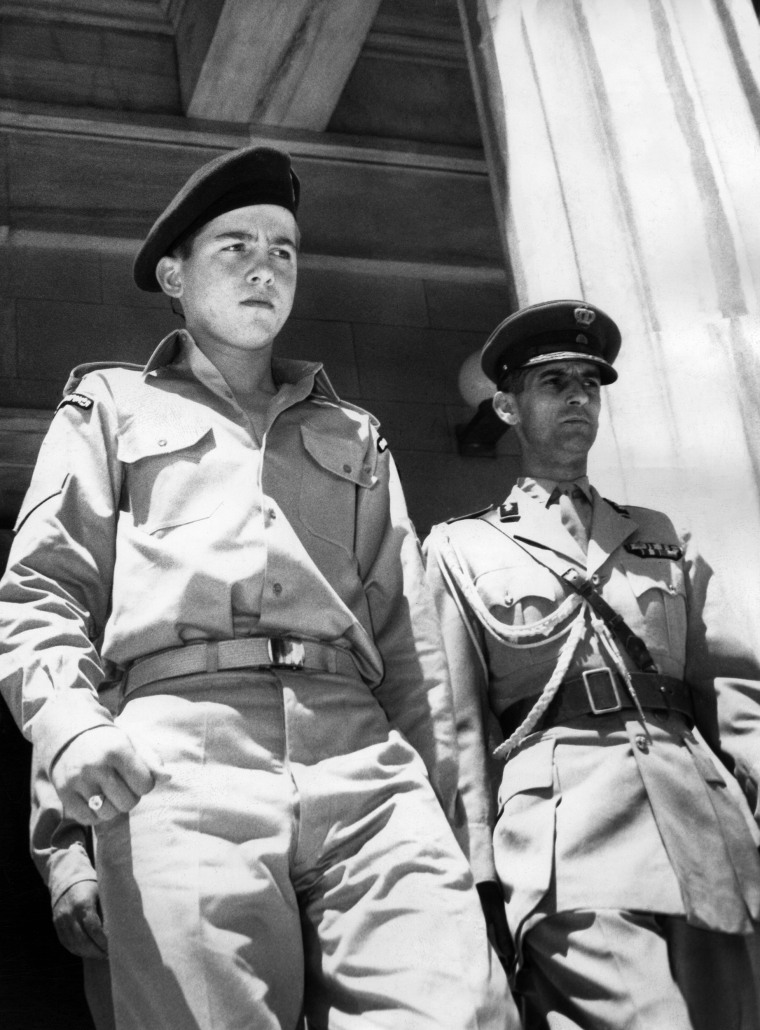
In 1960, aged 20, he and two other Greek sailors won a gold medal in the Dragon Class — now no longer an Olympic class — at the Rome Olympics. While still a prince, Constantine was elected a member of the International Olympic Committee and became an honorary member for life in 1974.
King Paul I died of cancer on March 6, 1964 and Constantine succeeded him, weeks after the Center Union party had triumphed over the conservatives with 53% of the vote.
'The people don't want you'
The prime minister, George Papandreou, and Constantine initially had a very close relationship, but it soon soured over Constantine’s insistence that control of the armed forces was the monarch’s prerogative.
With many officers toying with the idea of a dictatorship and viewing any non-conservative government as soft on communism, Papandreou wanted to control the ministry of defense and eventually demanded to be appointed defense minister as well. After an acrimonious exchange of letters with Constantine, Papandreou resigned in July 1965.
Constantine’s insistence on appointing a government composed of centrist defectors that won a narrow parliamentary majority on the third try was hugely unpopular. Many viewed him as being manipulated by his scheming mother, dowager Queen Frederica.
“The people don’t want you, take your mother and go!” became the rallying cry in the protests that rocked Greece in the summer of 1965.
Eventually, Constantine made a truce of sorts with Papandreou and, with his agreement, appointed a government of technocrats and, then, a conservative-led government to hold an election in May 1967.
But, with the polls heavily favoring the Center Union and with Papandreou’s left-leaning son, Andreas, gaining in popularity, Constantine and his courtiers feared revenge and with the aid of high-ranking officers prepared a coup.
However, a group of lower-ranking officers, led by colonels, were preparing their own coup and, apprised of Constantine’s plans by a mole, proclaimed a dictatorship on April 21, 1967.
Constantine was taken by surprise and his feelings toward the new rulers were obvious in the official photo of the new government. He pretended to go along with them, while preparing a counter-coup with the help of troops in northern Greece and the navy, which was loyal to him.
On Dec. 13, 1967, Constantine and his family flew to the northern city of Kavala with the intention of marching on Thessaloniki and setting up a government there. The counter-coup, badly managed and infiltrated, collapsed and Constantine was forced to flee to Rome the following day. He would never return as reigning king.
End of the monarchy
The junta appointed a regent and, after an abortive Navy counter-coup in May 1973, abolished the monarchy on June 1, 1973. A July plebiscite, widely considered rigged, confirmed the decision.
When the dictatorship collapsed in July 1974, Constantine was eager to return to Greece but was advised against it by veteran politician Constantine Karamanlis, who returned from exile to head a civilian government. Karamanlis, who had also headed the government between 1955-63, was a conservative but had clashed with the court over what he considered its excessive interference in politics.
After his triumphal win in November elections, Karamanlis called for a plebiscite on the monarchy in 1974. Constantine was not allowed in the country to campaign, but the result was unambiguous and widely accepted: 69.2% voted in favor of a republic.
Soon after, Karamanlis famously said the nation had rid itself of a cancerous growth. Constantine said on the day following the referendum that “national unity must take precedence ... I wholeheartedly wish that developments will justify the result of yesterday’s vote.”
To his final days, Constantine, while accepting that Greece was now a republic, continued to style himself King of Greece and his children as princes and princesses even though Greece no longer recognized titles of nobility.
Life in exile
For most of his years in exile, he lived in Hampstead Garden Suburb, London, and was said to be especially close to his second cousin Charles, the Prince of Wales and now King Charles III.
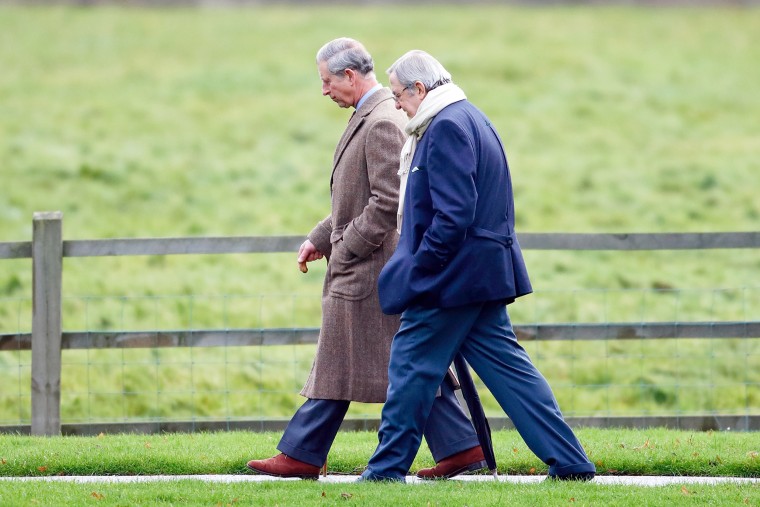
While it took Constantine 14 years to return to his country, briefly, to bury his mother, Queen Federica in 1981, he multiplied his visits thereafter and, from 2010, made his home there. There were continued disputes: in 1994, the then-socialist government stripped him of his nationality and expropriated what remained of the royal family’s property. Constantine sued at the European Court of Human Rights and was awarded 12 million euros in 2002, a fraction of the 500 million he had sought.
He is survived by his wife, the former Princess Anne-Marie of Denmark, youngest sister of Queen Margrethe II; five children, Alexia, Pavlos, Nikolaos, Theodora and Philippos; and nine grandchildren.
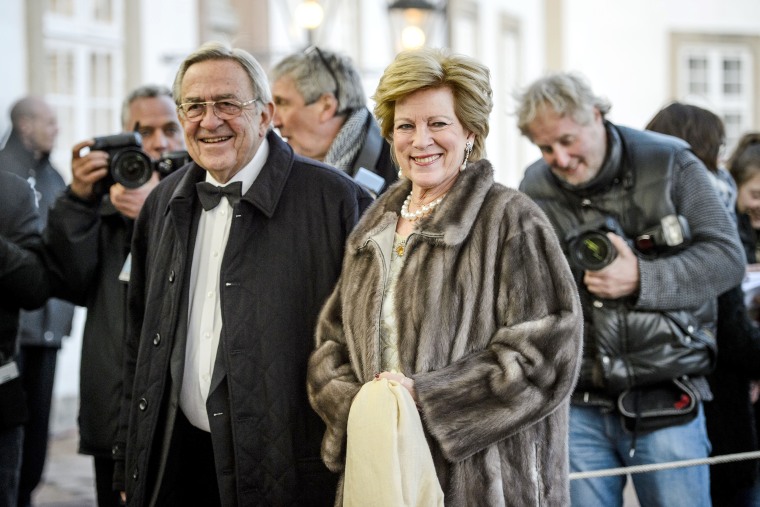

- Entertainment
- Rex Reed Reviews
- Awards Shows
- Climate Change
- Restaurants
- Gift Guides
- Business of Art
- Nightlife & Dining
- About Observer
- Advertise With Us
The Best New Biographies and Memoirs to Read in 2024
This year sees some riveting and remarkable lives—from artist ai weiwei to singer-songwriter joni mitchell—captured on the page..

A life story can be read for escapist pleasure. But at other times, reading a memoir or biography can be an expansive exercise, opening us up to broader truths about our world. Often, it’s an edifying experience that reminds us of our universal human vulnerability and the common quest for purpose in life.
Sign Up For Our Daily Newsletter
Thank you for signing up!
By clicking submit, you agree to our <a rel="nofollow noreferer" href="http://observermedia.com/terms">terms of service</a> and acknowledge we may use your information to send you emails, product samples, and promotions on this website and other properties. You can opt out anytime.
Biographies and memoirs charting remarkable lives—whether because of fame, fortune or simply fascination—have the power to inspire us for their depth, curiosity or challenges. This year sees a bumper calendar of personal histories enter bookshops, grappling with enigmatic public figures like singer Joni Mitchell and writer Ian Fleming , to nuanced analysis of how motherhood or sociopathy shape our lives—for better and for worse.
Here we compile some of the most rewarding biographies and memoirs out in 2024. There are stories of trauma and recovery, art as politics and politics as art, and sentences as single life lessons spread across books that will make you rethink much about personal life stories. After all, understanding the triumphs and trials of others can help us see how we can change our own lives to create something different or even better.
Zodiac: A Graphic Memoir by Ai Weiwei and illustrated by Gianluca Costantini

Ai Weiwei , the iconoclastic artist and fierce critic of his homeland China, mixes fairy tales with moral lessons to evocatively retrace the story of his life in graphic form. Illustrations are by Italian artist Gianluca Costantini . “Any artist who isn’t an activist is a dead artist,” Weiwei writes in Zodiac , as he embraces everything from animals found in the Chinese zodiac to mystical folklore tales with anamorphic animals to argue the necessity of art as politics incarnate. The meditative exercise uses pithy anecdotes alongside striking visuals to sketch out a remarkable life story marked by struggle. It’s one weaving political manifesto, philosophy and personal memoir to engage readers on the necessity of art and agitation against authority in a world where we sometimes must resist and fight back.
Alphabetical Diaries by Sheila Heti

Already well-known for her experimental writings, Sheila Heti takes a decade of diary entries and maps sentences against the alphabet, from A to Z. The project is a subversive rethink of our relationship to introspection—which often asks for order and clarity, like in diary writing—that maps new patterns and themes in its disjointed form. Heti plays with both her confessionals and her sometimes formulaic writing style (like knowingly using “Of course” in entries) to retrace the changes made (and unmade) across ten years of her life. Alphabetical Diaries is a sometimes demanding book given the incoherence of its entries, but remains an illuminating project in thinking about efforts at self-documentation.
Splinters: Another Kind of Love Story by Leslie Jamison

Unlike her previous work The Empathy Exams , which examined how we relate to one another and on human suffering, writer Leslie Jamison wrestles today with her own failed marriage and the grief of surviving single parenting. After the birth of her daughter, Jamison divorces her partner “C,” traverses the trials and tribulations of rebound relationships (including with “an ex-philosopher”) and confronts unresolved emotional pains born of her own life living under the divorce of her parents. In her intimate retelling—paired with her superb prose—Jamison charts a personal history that acknowledges the unending divide mothers (and others) face dividing themselves between partners, children and their own lives.
Radiant: The Life and Line of Keith Haring by Brad Gooch

Whether dancing figures or a “radiant baby,” the recognizable cartoonish symbols in Keith Haring ’s art endure today as shorthand signs representing both his playfulness and politicking. Haring (1958-1990) is the subject of writer Brad Gooch ’s deft biography, Radiant , a book that mines new material from the archive along with interviews with contemporaries to reappraise the influential quasi-celebrity artist. From rough beginnings tagging graffiti on New York City walls to cavorting with Andy Warhol and Madonna on art pieces, Haring battled everything from claims of selling out to over-simplicity. But he persisted with work that leveraged catchy quotes and colorful imagery to advance unsavory political messages—from AIDS to crack cocaine. A life tragically cut short at 31 is one powerfully celebrated in this new noble portrait.
The House of Hidden Meanings by RuPaul Charles

In The House of Hidden Meaning , celebrated drag queen, RuPaul , reckons with a murky inner world that has shaped—and hindered—a lifetime of gender-bending theatricality. The figurative house at the center of the story is his “ego,” a plaguing barrier that apparently long inhibited the performer from realizing dreams of greatness. Now as the world’s most recognizable drag queen—having popularized the art form for mainstream audiences with the TV show RuPaul’s Drag Race —RuPaul reflects on the power that drag and self-love have long offered across his difficult, and sometimes tortured, life. Readers expecting dishy stories may be disappointed, but the psychological self-assessment in the pages of this memoir is far more edifying than Hollywood gossip could ever be.
Sociopath: A Memoir by Patric Gagne

Patric Gagne is an unlikely subject for a memoir on sociopaths. Especially since she is a former therapist with a doctorate in clinical psychology. Still, Gagne makes the case that after a troubled childhood of antisocial behavior (like stealing trinkets and cursing teachers) and a difficult adulthood (now stealing credit cards and fighting authority figures), she receives a diagnosis of sociopathy. Her memoir recounts many episodes of bad behavior—deeds often marked by a lack of empathy, guilt or even common decency—where her great antipathy mars any ability for her to connect with others. Sociopath is a rewarding personal exposé that demystifies one vilified psychological condition so often seen as entirely untreatable or irreparable. Only now there’s a familiar face and a real story linked to the prognosis.
Ian Fleming: The Complete Man by Nicholas Shakespeare

Nicholas Shakespeare is an acclaimed novelist and an astute biographer, delivering tales that wield a discerning eye to subjects and embrace a robust attention to detail. Ian Fleming (1908-1964), the legendary creator of James Bond, is the latest to receive Shakespeare’s treatment. With access to new family materials from the Fleming estate, the seemingly contradictory Fleming is seen anew as a totally “different person” from his popular image. Taking cues from Fleming’s life story—from a refined upbringing spent in expensive private schools to working for Reuters as a journalist in the Soviet Union—Shakespeare reveals how these experiences shaped the elusive world of espionage and intrigue created in Fleming’s novels. Other insights include how Bond was likely informed by Fleming’s cavalier father, a major who fought in WWI. A martini (shaken, not stirred) is best enjoyed with this bio.
Knife: Meditations after an Attempted Murder by Salman Rushdie

Salman Rushdie , while giving a rare public lecture in New York in August 2022, was violently stabbed by an assailant brandishing a knife . The attack saw Rushdie lose his left hand and his sight in one eye. Speaking to The New Yorker a year later , he confirmed a memoir was in the works that would confront this harrowing existential experience: “When somebody sticks a knife into you, that’s a first-person story. That’s an ‘I’ story.” Knife: Meditations after an Attempted Murder is promised to be his raw, revelatory and deeply psychological confrontation with the violent incident. Like the sword of Damocles, brutality has long stalked Rushdie ever since the 1989 fatwa issued against the author, following the publication of his controversial novel, The Satanic Verses . The answer to such barbarity, Rushdie is poised to argue, is by finding the strength to stand up again.
The Art of Dying: Writings, 2019–2022 by Peter Schjeldahl (Release: May 14)

Peter Schjeldahl (1942-2022), longstanding art critic of The New Yorker , confronted his mortality when he was diagnosed with incurable lung cancer in 2019. The resulting essay collection he then penned, The Art of Dying , is a masterful meditation on one life preoccupied entirely with aesthetics and criticism. It’s a discursive tactic for a memoir that avoids discussing Schjeldahl’s coming demise while equally confirming its impending visit by avoiding it. Acknowledging that he finds himself “thinking about death less than I used to,” Schjeldahl spends most of the pages revisiting familiar art subjects—from Edward Hopper ’s output to Peter Saul ’s Pop Art—as vehicles to re-examine his own remarkable life. With a life that began in the humble Midwest, Schjeldahl says his birthplace was one that ultimately availed him to write so plainly and cogently on art throughout his career. Such posthumous musings prove illuminating lessons on the potency of American art, with whispered asides on the tragedy of death that will come for all of us.
Traveling: On the Path of Joni Mitchell by Ann Powers (Release: June 11)

Joni Mitchell has enjoyed a remarkable revival recently, even already being one of the most acclaimed and enduring singer/songwriters. After retiring from public appearances for health reasons in the 2010s, Mitchell, 80, has returned to the spotlight with a 2021 Kennedy Centers honor , an appearance accepting the 2023 Gershwin Prize and even a live performance at this year’s Grammy Awards . It’s against this backdrop of public celebration of Mitchell that NPR music critic Ann Powers retraces the life story and musical (re)evolution of the singer, from folk to jazz genres and rock to soul music, across five decades for the American songbook. “What you are about to read is not a standard account of the life and work of Joni Mitchell,” she writes in the introduction. Instead, Powers’ project is one showing how Mitchell’s many journeys—from literal road trips inspiring tracks like “All I Want” to inner probings of Mitchell’s psyche, such as the song “Both Sides Now”—have always inspired Mitchell’s enduring, emotive and palpable output. These travels hold the key, Powers says, to understanding an enigmatic artist.

- SEE ALSO : ‘Under the Bridge’ Review: A Miniseries That Interrogates the True Crime Genre
We noticed you're using an ad blocker.
We get it: you like to have control of your own internet experience. But advertising revenue helps support our journalism. To read our full stories, please turn off your ad blocker. We'd really appreciate it.
How Do I Whitelist Observer?
Below are steps you can take in order to whitelist Observer.com on your browser:
For Adblock:
Click the AdBlock button on your browser and select Don't run on pages on this domain .
For Adblock Plus on Google Chrome:
Click the AdBlock Plus button on your browser and select Enabled on this site.
For Adblock Plus on Firefox:
Click the AdBlock Plus button on your browser and select Disable on Observer.com.
Advertisement
Do You Know These Films Based on Great Biographies?
By J. D. Biersdorfer April 22, 2024
- Share full article

Welcome to Great Adaptations, the Book Review’s regular multiple-choice quiz about literature that has gone on to find new life in the form of movies, television shows, theatrical productions and other formats. This week’s quiz highlights films that were adapted from the biographies or autobiographies of their notable subjects.
Just tap or click your answers to the five questions below. And scroll down after you finish the last question for links to the books and their screen adaptations.
“Oppenheimer,” a film about the man who was instrumental in developing the first nuclear weapons for the United States, won seven Academy Awards earlier this year. The film’s screenplay was adapted from a 2005 biography by Kai Bird and Martin J. Sherwin. What was the main title of the book?
“American Prometheus”
“Burning the Sky”
“A Wing and a Prayer”
The 1972 film “Lady Sings the Blues” was loosely based on which singer’s 1956 autobiography?
Ella Fitzgerald
Bessie Smith
Billie Holiday
Mildred Bailey
“Alan Turing: The Enigma” is Andrew Hodges’ 1983 biography of the gay British mathematician who helped the Allies decipher encrypted Nazi messages during World War II, but was later punished for his sexuality. What was the name of the 2014 film based on the book?
“The Turing Test”
“The Code Breaker”
“The Imitation Game”
“Julie & Julia” is a 2009 film about the chef Julia Child and the blogger Julie Powell, who tried to make all the recipes from one of Child’s cookbooks years later. The screenplay was based on two different books, Powell’s 2005 memoir about the project (and source of the movie’s name) and Julia Child’s posthumously published 2006 autobiography. What was that book’s title?
“Blood, Bones and Butter”
“My Life in France”
“Kitchen Confidential”
“A Year in Provence”
After reading Louis Fischer’s 1950 biography of this global figure, the film director Richard Attenborough spent years trying to make a film about that person’s life. The picture was finally released in 1982 and won eight Academy Awards. Who was the subject of the movie?
Harriet Tubman
J. Edgar Hoover
Mahatma Gandhi
Frida Kahlo
Explore More in Books
Want to know about the best books to read and the latest news start here..
Salman Rushdie’s new memoir, “Knife,” addresses the attack that maimed him in 2022, and pays tribute to his wife who saw him through .
Recent books by Allen Bratton, Daniel Lefferts and Garrard Conley depict gay Christian characters not usually seen in queer literature.
What can fiction tell us about the apocalypse? The writer Ayana Mathis finds unexpected hope in novels of crisis by Ling Ma, Jenny Offill and Jesmyn Ward .
At 28, the poet Tayi Tibble has been hailed as the funny, fresh and immensely skilled voice of a generation in Māori writing .
Amid a surge in book bans, the most challenged books in the United States in 2023 continued to focus on the experiences of L.G.B.T.Q. people or explore themes of race.
Each week, top authors and critics join the Book Review’s podcast to talk about the latest news in the literary world. Listen here .

IMAGES
VIDEO
COMMENTS
Best Known For: Constantine I was a Roman emperor who ruled early in the 4th century. He was the first Christian emperor and saw the empire begin to become a Christian state. Constantine I had his ...
Constantine was born probably in the later 280s ce. A typical product of the military governing class of the later 3rd century, he was the son of Flavius Valerius Constantius, an army officer, and his wife (or concubine) Helena. In 293 ce his father was raised to the rank of Caesar, or deputy emperor (as Constantius I Chlorus ), and was sent to ...
Constantine I (27 February c. 272 - 22 May 337), also known as Constantine the Great, was a Roman emperor from AD 306 to 337 and the first Roman emperor to convert to Christianity. He played a pivotal role in elevating the status of Christianity in Rome, decriminalizing Christian practice and ceasing Christian persecution in a period referred to as the Constantinian shift.
Constantine I, aka Constantine the Great, was Roman emperor from 306 to 337 CE. Realizing that the Roman Empire was too large for one man to adequately rule, Emperor Diocletian (284-305 CE) split the empire into two, creating a tetrachy or rule of four. While he ruled the east from Nicomedia as an "augustus" with Galerius as his "caesar," Maximian and Constantius the Pale ruled the west.
Death Date. May 22, 337. Constantine became the first Christian Roman Emperor and founder of Constantinople, which brought about the beginning of the East Roman Empire known today as Byzantium. Constantine's exposure to imperial life began early when he was taken to the court of Diocletian. While serving in the imperial guard of emperor ...
270. Antony takes up life of solitude. 280. Constantine born. 337. Constantine dies. 381. Christianity made state religion of Roman Empire. In the spring of 311, with 40,000 soldiers behind him ...
Constantine the Great (27 Feb c. 272/273 - 22 May 337) Constantine was Roman Emperor (A.D. 306-337). He was the first Roman Emperor to convert to Christianity and played a crucial role in the spread of the religion. With co-Emperor Licinius, he issued the Edict of Milan in 313, which proclaimed tolerance of all religions throughout the empire.
February 25, 2019. • 5 min read. Emperor Constantine (ca A.D. 280- 337) reigned over a major transition in the Roman Empire—and much more. His acceptance of Christianity and his ...
Constantine I, known as Constantine the Great officially Flavius Valerius Constantinus, (born Feb. 27, after 280? ce, Naissus, Moesia—died May 22, 337, Ancyrona, near Nicomedia, Bithynia), First Roman emperor to profess Christianity.The eldest son of Constantius I Chlorus, he spent his youth at the court of Diocletian.Passed over as successor to the throne, he fought to make himself emperor.
The Roman Emperor Constantine (c 280 - 337 A.D.) was one of the most influential personages in ancient history. By adopting Christianity as the religion of the vast Roman Empire, he elevated a once illegal cult to the law of the land. At the Council of Nicea, Constantine the Great settled Christian doctrine for the ages.
by World History Edu · July 9, 2019. Constantine the Great - the first Roman Emperor to endorse Christianity. Image source: museicapitolini.org. He was an ancient Roman ruler (emperor) who reigned from 306-337 AD. Constantine the Great, also called Constantine I, was very famous for his role in uniting Rome and contributing to the ...
Marble portrait of the Emperor Constantine I, c. AD 325-70, Metropolitan Museum, New York Flavius Valerius Constantius, future emperor Constantine the Great, was born in 272 CE in the Roman province of Upper Moesia (present-day Serbia).His father, Constantius Chlorus, was a member of Aurelian 's bodyguard, who later became emperor in the Tetrarchy of Diocletian.
Reign: 25 July 306 - 22 May 337. Constantine I, known as Constantine the Great or just Constantine, born Flavius Valerius Constantinus, was Roman emperor, reigning from 306 to 337. He was born in Naissus, Dacia Mediterranea (now Niš, Serbia) and was the son of Flavius Constantius (who had been one of the four emperors of the Tetrarchy) and ...
July 3, 324. The uneasy truce between East and West comes to an end with Constantine's army routing Licinius's forces at Adrianople (modern Edirne, Turkey). Constantine wins another victory at Chrysopolis (modern Üsküdar, Turkey) in September, and Licinius surrenders. With the exile of Licinius, Constantine becomes the sole emperor of ...
Michael Grant. 3.51. 204 ratings30 reviews. Constantine the Great delves into the reasons why the reign of this Roman emperor (306-37) marked an historical epoch, albeit one charged with irony. Founding his capital at Constantinople, Constantine revitalized the Eastern half of the empire, enabling it to survive and to flourish (as the Byzantine ...
Annotation. The most important record that remains of Constantine's life is a biography written shortly after his death by the historian and Christian bishop Eusebius of Caesarea (ca. 263-339 ?), a close adviser to Constantine. As Constantine's friend and an official in the Church, Eusebius expressed a particular point of view in his ...
Born: February 27, 272 AD in Naissus, Serbia. Died: May 22, 337 AD in Nicomedia, Turkey. Best known for: Being the first Roman Emperor to convert to Christianity and establishing the city of Constantinople. Also known as: Constantine the Great, Constantine I, Saint Constantine. The Arch of Constantine in Rome. Photo by Adrian Pingstone. Biography:
An image of Constantine, subject of Life of Constantine. Life of Constantine the Great (Greek: Βίος Μεγάλου Κωνσταντίνου; Latin: Vita Constantini) is a panegyric written in Greek in honor of Constantine the Great by Eusebius of Caesarea in the 4th century AD.It was never completed due to the death of Eusebius in 339. The work provides scholars with one of the most ...
Constantine (died September 411, Arelate, Viennensis [now Arles, France]) was a usurping Roman emperor who was recognized as coruler by the Western emperor Honorius in 409. Proclaimed emperor by his army in Britain in 407, Constantine crossed to the European continent with a force of British troops; by the end of the year he controlled eastern ...
Edoardo Albert Author. William Meikle Author. Faith L. Justice Author. Kris Branham Author. Ian Ross Author. Lilith Saintcrow Author. +4. 10 authors created a book list connected to Constantine the Great, and here are their favorite Constantine the Great books. Shepherd is reader supported.
Jan. 10, 2023, 3:23 PM PST / Source: The Associated Press. By The Associated Press. ATHENS, Greece — Constantine, the former and last king of Greece, who won an Olympic gold medal before ...
Zodiac: A Graphic Memoir by Ai Weiwei and illustrated by Gianluca Costantini. 'Zodiac: A Graphic Memoir' by Ai Weiwei. Ten Speed Graphic. Ai Weiwei, the iconoclastic artist and fierce critic ...
Constantine upheld Roman supremacy against the insubordination of Felix, archbishop of Ravenna. He received as a pilgrim King Cenred of Mercia, who became a monk at Rome (709). Constantine strongly objected to the canons, several of which opposed Roman customs, established by the largely eastern Trullan (or Quinisext) Council assembled under the Byzantine emperor Justinian II in 691.
Don't let that stop the reader of this thorough, compassionate biography by Susan Page: It's a valuable document, sobering where "Audition" aimed for sassy. If anything, the 16 long years ...
The writer Ayana Mathis finds unexpected hope in novels of crisis by Ling Ma, Jenny Offill and Jesmyn Ward. At 28, the poet Tayi Tibble has been hailed as the funny, fresh and immensely skilled ...
Constantius I (born c. 250, Dacia Ripensis—died July 25, 306, Eboracum, Britain [now York, North Yorkshire, England]) was a Roman emperor and father of Constantine I the Great. As a member of a four-man ruling body ( tetrarchy) created by the emperor Diocletian, Constantius held the title of caesar from 293 to 305 and caesar augustus in 305 ...